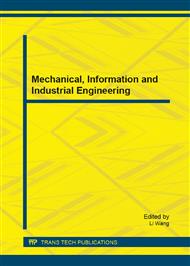[1]
Kosterev D N, Taylor C W, Mittelstadt W A. Model validation for the August 10, 1996 WSCC system outage[J]. IEEE Trans on power Systems, 1999, 14(3): 967-979.
DOI: 10.1109/59.780909
Google Scholar
[2]
Pereira L, Kosterev D, Mackin P, et al, An interim dynamic induction motor model for stability studies in the WSCC[J], IEEE Trans on power Systems, 2002, 17(4): 1108-1115.
DOI: 10.1109/tpwrs.2002.804960
Google Scholar
[3]
He Renmu, Ma Jin, Composite load modeling via measurement approach, IEEE Transactions on power systems, 2006, 21(2): 663-671.
DOI: 10.1109/tpwrs.2006.873130
Google Scholar
[4]
TangYong, Hou Junxian, Liu Wenzhuo. The modeling of distribution network and var compensator and induction motor in the load model for power system digital simulation[J]. Proceeding of the CSEE, 2005. 25(3): 8-12.
Google Scholar
[5]
Zhang Hongbin, Tang Yong, Zhang Dongxia, et al. Analysis on Effects of Different Load Model on Transmitting Capacty of Northeast China Power Grid. Power System Technology. 2007, 31(4): 55-58.
Google Scholar
[6]
Tang Yong, Zhang Dongxia, Zhang Hongbin, et al. Synthesis Load Model and its Fitting Parameters in Simulation of Large Disturbance Test Carried Out in Northeast China Power Grid. Power System Technology. 2007, 31(4): 75-78.
Google Scholar
[7]
Zhao Bing, Tang Yong, Zhang Wenchao, et al. Validation of Synthesis Load Model and Its Parameter Modification Based on Post-Disturbance Simulation Method. Power System Technology. 2010, 34(1): 45-50.
Google Scholar
[8]
Zheng Jinghong, Zhu Shouzhen, Slip Coherency Based Approach for Air Conditioning Load Modeling[J], Automation of Electric Power Sytems, 2008, 32(16): 11-15.
Google Scholar
[9]
Hua Bai, Pei Zhang, A Novel parameter idengtification approach via hybrid learning for aggregate load modeling, IEEE Transactions on power systems, 2009, 24(3): 1145-1154.
DOI: 10.1109/tpwrs.2009.2022984
Google Scholar
[10]
Zhou Ming. Sun Shudong. Genetic Algorithms: Theory and Applications[M]. National Defence and Industrial publishing. (1999).
Google Scholar
[11]
ZHAO Bing, TANG Yong, ZHANG Wen-chao, et al. Determination of Induction Motor Simulation Model Parameters Based on the Motor Manufacture Data[J]. Proceedings of the CSEE. 2010, 30(1): 52-58.
Google Scholar


